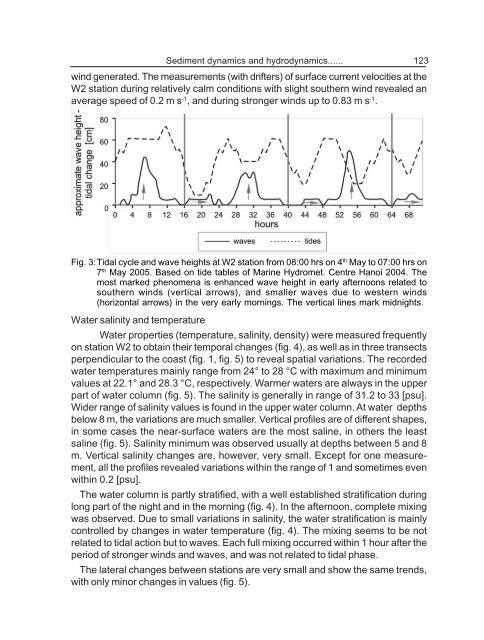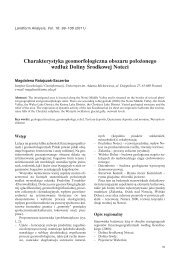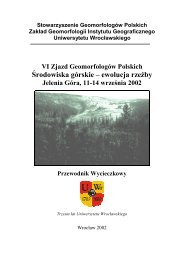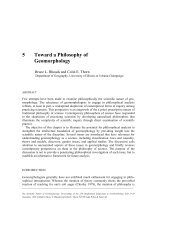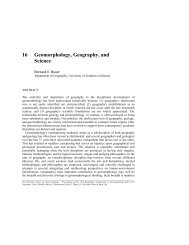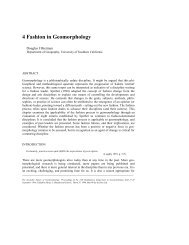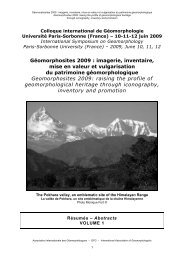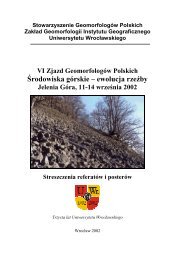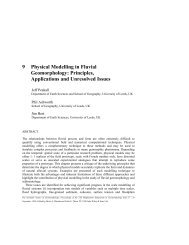Meyniana
Meyniana
Meyniana
You also want an ePaper? Increase the reach of your titles
YUMPU automatically turns print PDFs into web optimized ePapers that Google loves.
Sediment dynamics and hydrodynamics...... 123<br />
wind generated. The measurements (with drifters) of surface current velocities at the<br />
W2 station during relatively calm conditions with slight southern wind revealed an<br />
average speed of 0.2 m s -1 , and during stronger winds up to 0.83 m s -1 .<br />
Fig. 3:Tidal cycle and wave heights at W2 station from 08:00 hrs on 4 th May to 07:00 hrs on<br />
7 th May 2005. Based on tide tables of Marine Hydromet. Centre Hanoi 2004. The<br />
most marked phenomena is enhanced wave height in early afternoons related to<br />
southern winds (vertical arrows), and smaller waves due to western winds<br />
(horizontal arrows) in the very early mornings. The vertical lines mark midnights.<br />
Water salinity and temperature<br />
Water properties (temperature, salinity, density) were measured frequently<br />
on station W2 to obtain their temporal changes (fig. 4), as well as in three transects<br />
perpendicular to the coast (fig. 1, fig. 5) to reveal spatial variations. The recorded<br />
water temperatures mainly range from 24° to 28 °C with maximum and minimum<br />
values at 22.1° and 28.3 °C, respectively. Warmer waters are always in the upper<br />
part of water column (fig. 5). The salinity is generally in range of 31.2 to 33 [psu].<br />
Wider range of salinity values is found in the upper water column. At water depths<br />
below 8 m, the variations are much smaller. Vertical profiles are of different shapes,<br />
in some cases the near-surface waters are the most saline, in others the least<br />
saline (fig. 5). Salinity minimum was observed usually at depths between 5 and 8<br />
m. Vertical salinity changes are, however, very small. Except for one measurement,<br />
all the profiles revealed variations within the range of 1 and sometimes even<br />
within 0.2 [psu].<br />
The water column is partly stratified, with a well established stratification during<br />
long part of the night and in the morning (fig. 4). In the afternoon, complete mixing<br />
was observed. Due to small variations in salinity, the water stratification is mainly<br />
controlled by changes in water temperature (fig. 4). The mixing seems to be not<br />
related to tidal action but to waves. Each full mixing occurred within 1 hour after the<br />
period of stronger winds and waves, and was not related to tidal phase.<br />
The lateral changes between stations are very small and show the same trends,<br />
with only minor changes in values (fig. 5).


